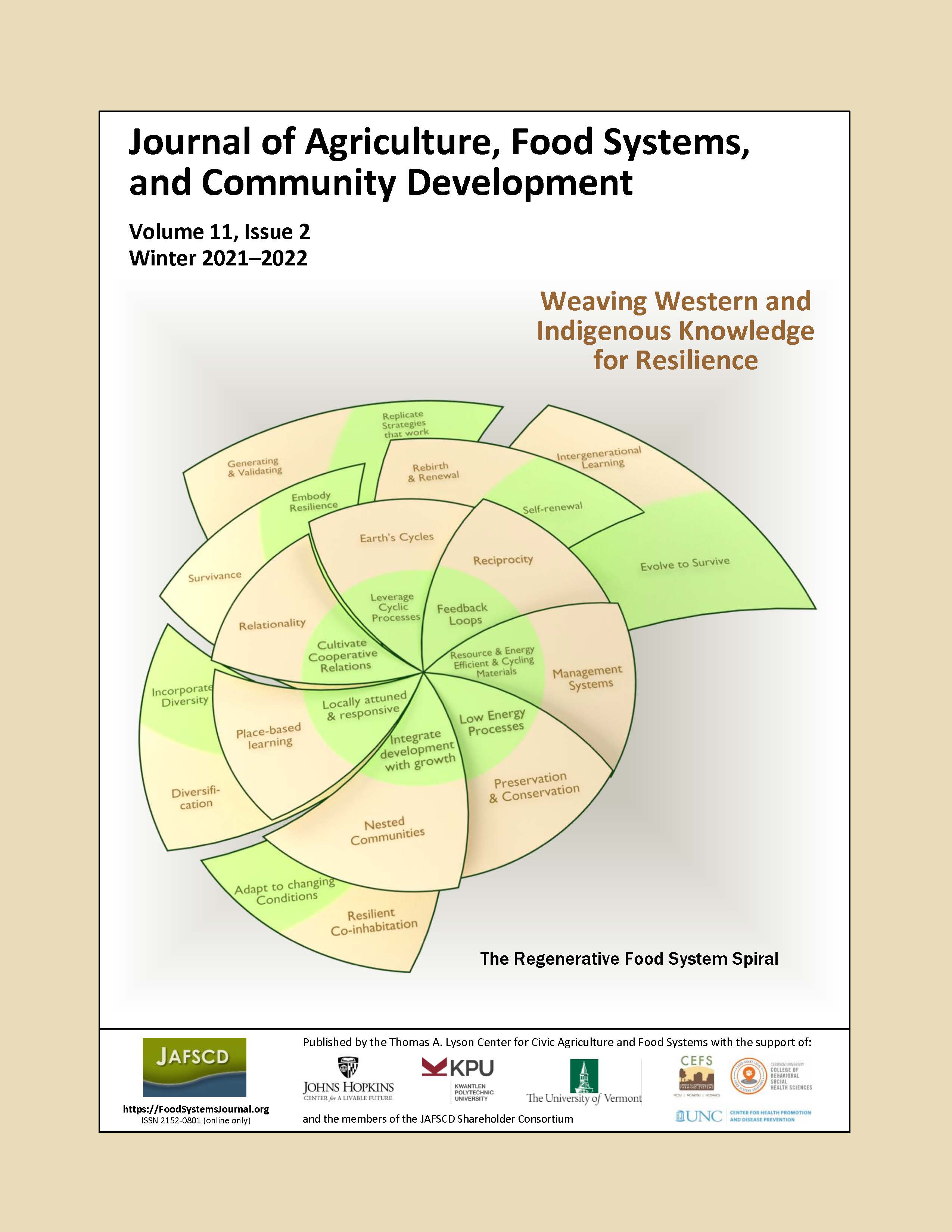IN THIS ISSUE: Weaving Western and Indigenous Knowledge for resilience
DOI:
https://doi.org/10.5304/jafscd.2022.112.021
Keywords:
Editorial, Content, Traditional Ecological Knowledge, Life’s PrinciplesAbstract
First paragraph:
In this issue, our articles explore the often-fragile interaction of scholars, local activists, and practitioners who are blending ideas and philosophies at home and abroad to find a more just and equitable food system that can help save the planet. Or, to put their collaborative efforts more viscerally, to find ways for human beings to save themselves from themselves.
An example of the weaving of Western and Indigenous knowledge is on the cover of this issue: the “Regenerative Food System Spiral” represents the intersection between Traditional Ecological Knowledge (TEK) (brown) and Life’s Principles (LPs) (green). The internal spiral is the base of seven principles; the first tier is the expansion over a shorter time frame, and the second tier is the expansion over a longer time frame—many generations. The spiral is a recurring pattern and symbol both in nature and in Indigenous communities, from observation of this optimal growth form. This image is Figure 2 from the article “Weaving disciplines to conceptualize a regenerative food system,” by Sara El-Sayed and Scott Cloutier (both at Arizona State University) who conceptualized this approach, with the graphic designed by Ahmed Barakat. . . .
Metrics

Downloads
Published
How to Cite
Issue
Section
License
Copyright (c) 2022 Duncan Hilchey

This work is licensed under a Creative Commons Attribution 4.0 International License.
The copyright to all content published in JAFSCD belongs to the author(s). It is licensed as CC BY 4.0. This license determines how you may reprint, copy, distribute, or otherwise share JAFSCD content.











